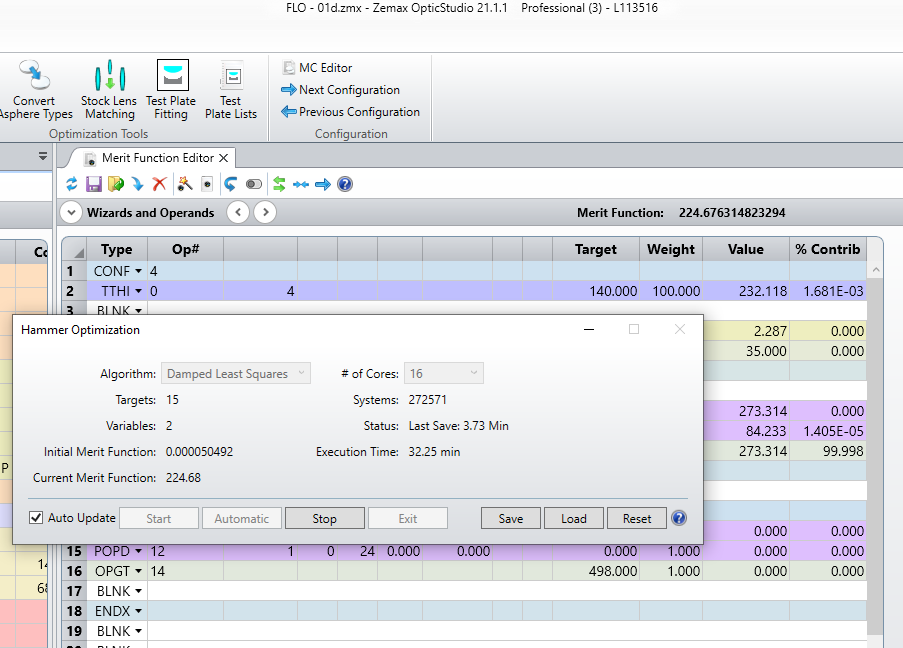Hello,
When I run the hammer optimisation the merit funciton goes up, the operands in the merit function also increase and the returned variables are worse than when the optimisation is started.
I raised this issue in October, you were able to replicate the problem and was told you would look into it.
Has anyone else had this issue? It seems like core functionality to me and therefore fixing it would be a priority.
Please this really needs to work!






